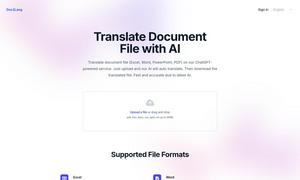Sweep

About Sweep
Sweep is an advanced AI code assistant that streamlines the development process for software teams. By converting GitHub issues into pull requests, it saves time and enhances productivity. Users benefit from its ability to navigate complex codebases and automate debugging, making it essential for efficient development.
Sweep's pricing plans cater to varying user needs, ensuring value at every tier. Each subscription offers unique features tailored for teams seeking efficiency in code management. Users can enjoy special discounts and benefits upon upgrading, making Sweep a cost-effective solution for managing code issues.
Sweep's user interface is designed for seamless navigation, prioritizing accessibility and ease of use. Its intuitive layout allows users to quickly access functionalities that enhance the coding experience. With unique features, Sweep ensures that users can efficiently manage issues and requests without frustration.
How Sweep works
Users interact with Sweep through an easy onboarding process, where they can connect their GitHub accounts. Once set up, users can input GitHub issues directly into Sweep. The platform efficiently analyzes the codebase and automatically generates pull requests. With its AI capabilities, Sweep significantly reduces the time spent on coding tasks.
Key Features for Sweep
Automated Code Conversion
Automated Code Conversion is a standout feature of Sweep, transforming GitHub issues into actionable pull requests. This functionality empowers developers by saving them time and effort, streamlining the software development workflow effectively.
Intelligent Debugging Assistance
Sweep's Intelligent Debugging Assistance allows users to quickly identify and solve production issues. By leveraging AI, Sweep enhances the debugging process, enabling developers to focus on strategic solutions while automating pull request generation for fixes.
Automated Testing Creation
Automated Testing Creation is another key feature of Sweep, coding unit and integration tests based on user-defined standards. This automated process minimizes the effort required for quality assurance, allowing developers to enhance their software's reliability efficiently.








